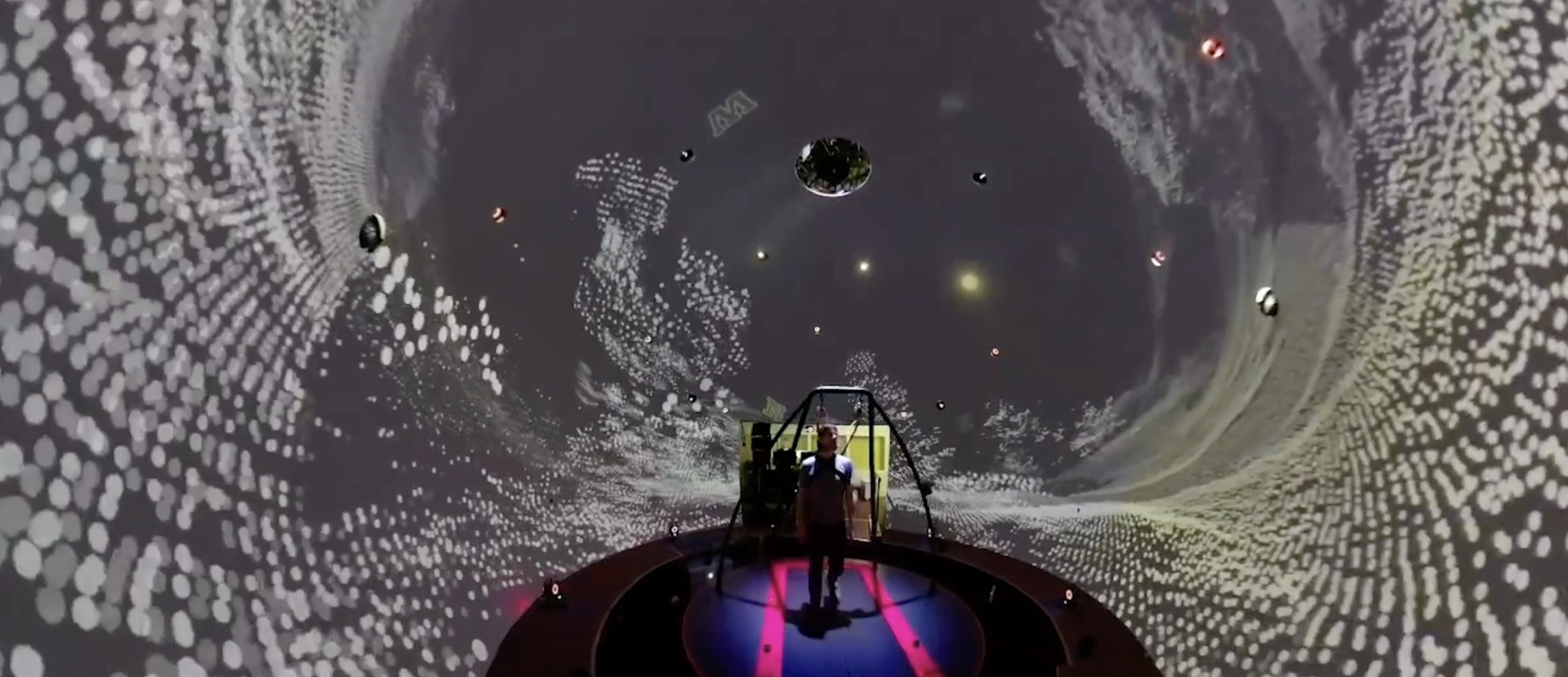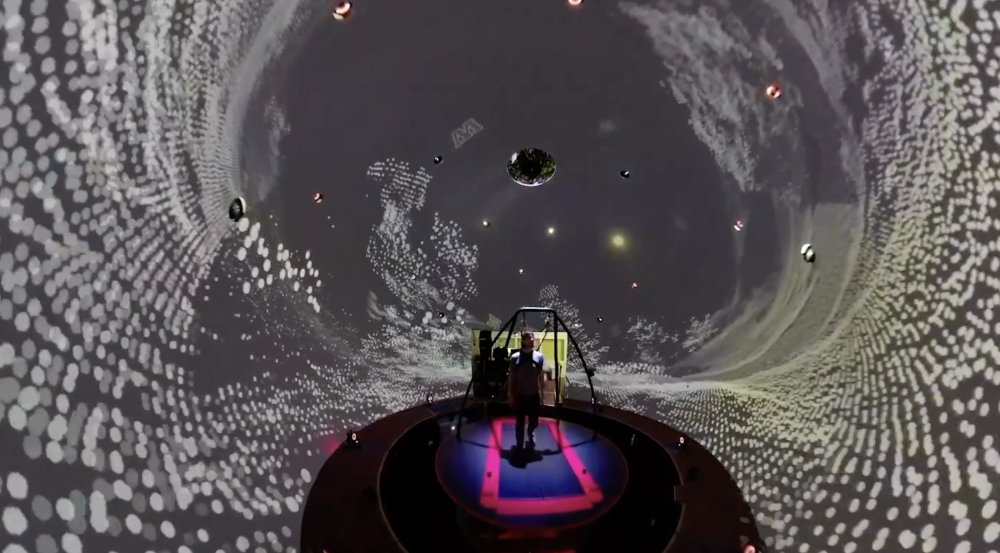
STRIVE Center hosts University of Michigan for exoskeleton study

Lincoln Laboratory's Sensorimotor Technology Realization in Immersive Virtual Environments (STRIVE) Center is a 4,000 square-foot facility that houses technology that can be used to simulate environments for studies of human motion. In addition to supporting collaboration between Laboratory groups, the center can also be used for collaboration with other research teams.
Caleb Jeanniton, a second-year PhD student at the University of Michigan, was tasked by his advisor, Dr. Leia Stirling, to run a series of human-factors tests using a powered exoskeleton and the motion-capture capabilities of the Laboratory's STRIVE Center. The STRIVE Center has worked with Dr. Stirling for many years, and this most recent study is a continuation of their combined research on the impacts of wearing an exoskeleton.
There are three pillars of human-factors testing: the human, the environment, and the technology. The volunteer subjects of this study were immersed in a 360-degree virtual environment with a simulated intersection generated by the STRIVE Center's Computer Assisted Rehabilitation Environment (CAREN) system. Participants walked through the city scene on a force-measuring treadmill while wearing the exoskeleton. Data were also recorded in the same situation without the exoskeleton for a control data set.
This study aims to answer the question: How does the use of an exoskeleton impact one's decision to cross a street during a yellow light? The quantitative data from the motion capture system and the qualitative data from a questionnaire are shedding light on this question, but still need to be thoroughly analyzed at the University of Michigan. "These results will have broader implications related to how human-machine interfaces influence decision making and task performance," says Brian Baum, the STRIVE Center's research manager.
The STRIVE Center staff helped guide the use of the technology and the data collection throughout Jeanniton's time at the facility. "The main means for collecting data in this study are the motion-capture markers," says Harvey Edwards, operations manager at the STRIVE Center. "So, after we get done collecting, we can reconstruct those markers and determine joint forces, angles, and where the person is looking in real time, and help determine what factors were involved in making their decisions."